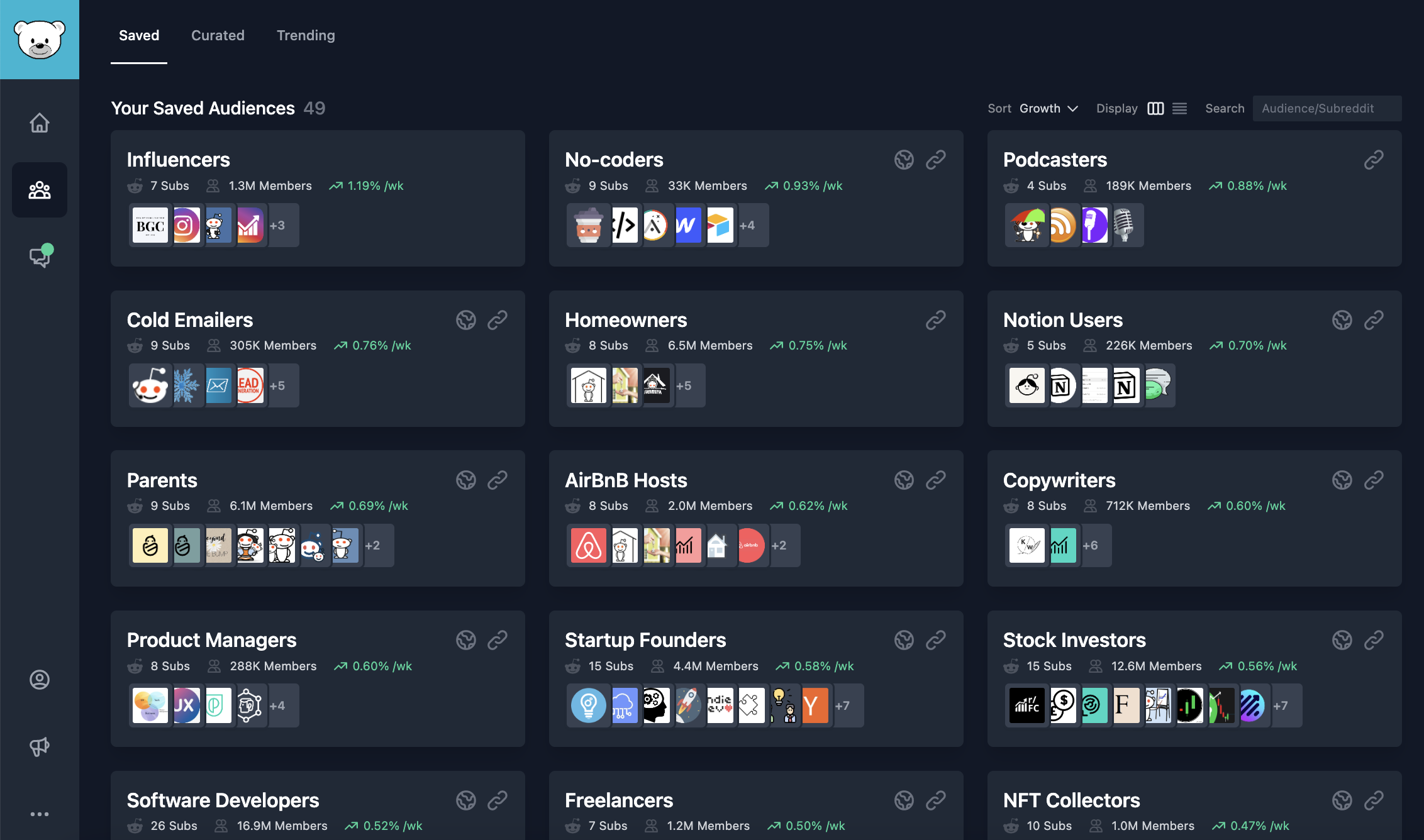How to Identify Market Gaps
A market gap is essentially a disconnect between what people need and what’s currently available in the market. These gaps could be due to missing features, poor user experience, or even an entirely untapped niche.
As a real-life example, if Travis Kalanick and Garrett Camp hadn’t identified a huge market gap when building Uber, we’d all be frantically waving our hands trying to hail an overpriced taxi to this day.
So how can you track and identify gaps in your market? Read on!
Methods for Identifying Market Gaps
A quick note: there’s no cookie-cutter way to uncover market gaps. However, combining multiple strategies can increase your chances of finding big areas for improvement. Below, I’ll walk you through tried-and-true methods you can mix and match, with examples to inspire you.
Review Mining
Review mining is exactly what it sounds like. It involves parsing through reviews on platforms like Amazon, G2, Yelp, or even App Store ratings to give you precious customer insights that mention market gaps.
That said, there’s a sweet spot for mining those reviews: the ones belonging to 3-star and 4-star ratings. After all, five-star praise – particularly on G2 – is likely to feature comments like “I can’t think of anything to dislike.” On the other hand, 1-star reviews are likely to be “this absolutely sucks,” with no insightful additions whatsoever.
Prioritize the “good enough” and “meh” reviews, where people talk about what they wish the product could do better.
The Problem with Review Mining
Review mining is a double-edged sword. It’s easy to enter a massive rabbit hole and get lost in tabs after tabs of research. Plus, you may stumble upon “encouraged” and fabricated reviews, which could eventually skew your data.
In this case, the place to go is Reddit. There, completely anonymous folks with goofy usernames can be bluntly honest about their likes and dislikes.
However, Reddit has 73.1 million daily active users and around 550 million posts. That’s a massive rabbit hole all over again. In this case, I should introduce GummySearch.
GummySearch helps you organize and analyze Reddit posts, eliminating the need to manually comb through thousands of posts for market gaps.
With GummySearch’s AI-powered features (like asking AI anything or finding patterns in Reddit posts), you can save hours of reading, measured in AI minutes. This keeps your research accurate, quick, and efficient.

Cool. Now, Where Do I Start with Review Mining In GummySearch?
You’ll start by creating a new Audience for your product or solution. Click the “Audiences” icon on the left-hand side of your dashboard, and then the big “Make a new audience” button.
(This process works whether you’re trying to find market gaps for an existing or potential product.)
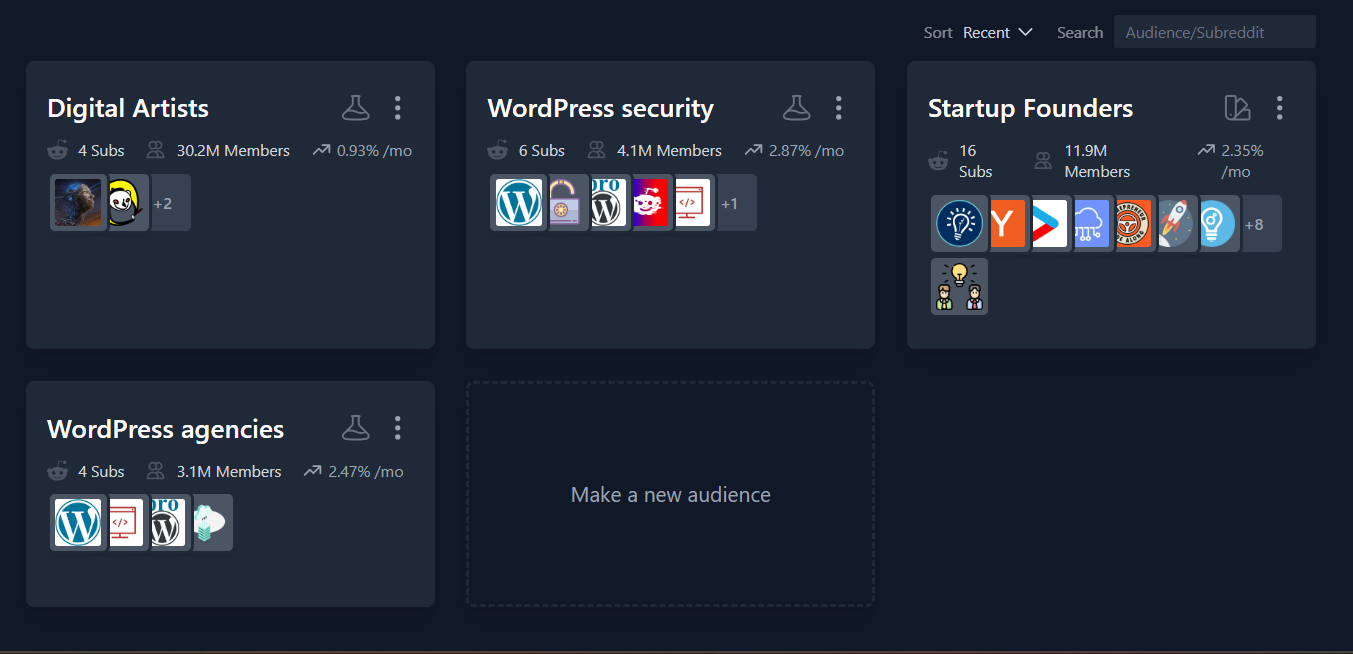
Next, you’ll select different subreddits that most reflect your audience. Here’s an example:
Let’s say I have an app for fitness enthusiasts who want to determine what competitors lack. In this case, my subreddit choices would be, say, r/GYM, r/fitness, r/AdvancedFitness, and more. That’s where people will be voicing their beliefs, desires, and frustration for fitness.
Note that you can always add or exclude subreddits as you go. 🙂
Here’s what my fresh audience, “Fitness Enthusiasts,” would look like:
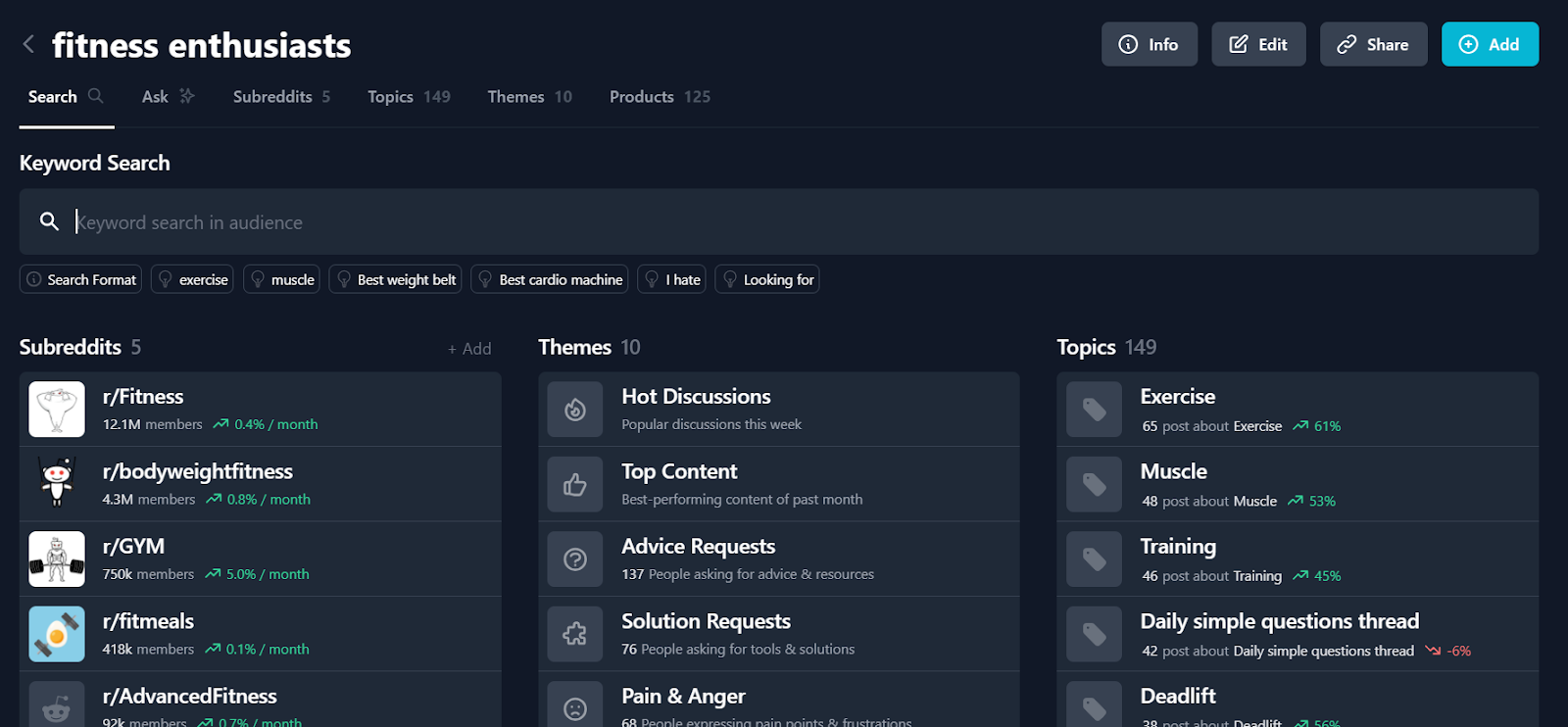
This audience might only contain 5 subreddits, but that’s 17.6M members. There’s no way I’ll manually sift through all of that!
That’s why I’ll leverage GummySearch’s AI-based themes to help me find the most relevant themes in a fraction of the time, including:
- Advice Requests
- Solution Requests
- Pain & Anger
- Money Talk
- Ideas
- Opportunities
- Self-Promotion
- News
(If there isn’t enough data to extract patterns, not all of them will be available.)
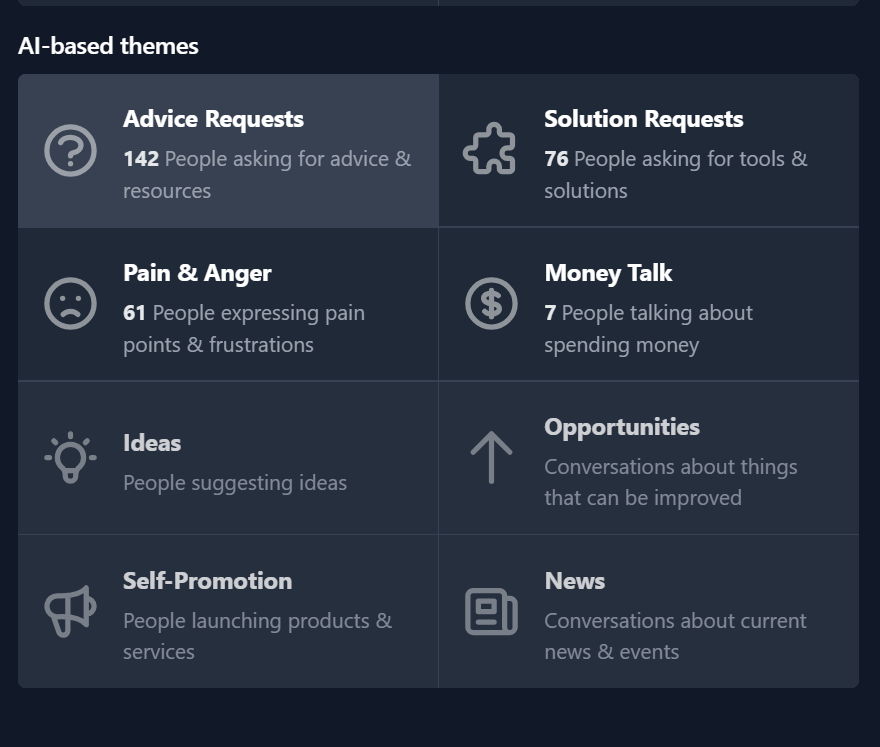
I’d like to find out which solutions people are looking for so that I can potentially incorporate new features inside my fitness app.
Going back to our example, when I go to Solution Requests, here’s what AI tells me based on what 76 people are saying:
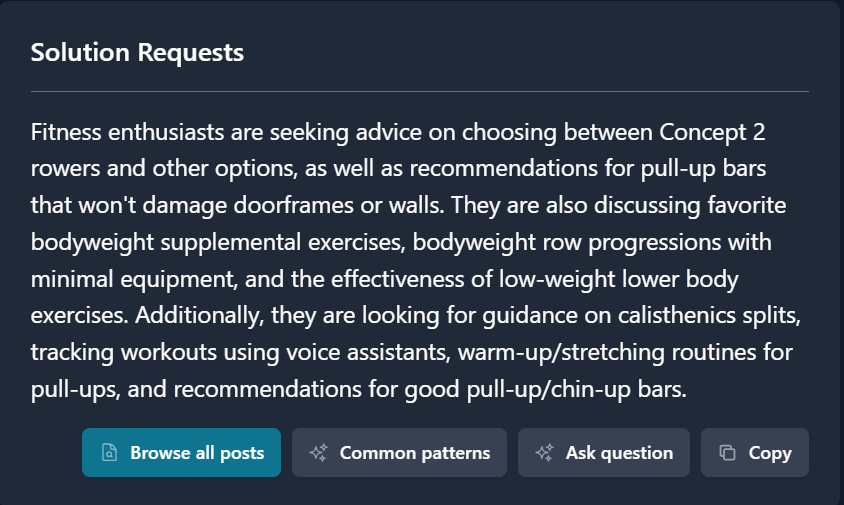
All those requests are worth noting. But let’s say I’d like to be more granular and find requests specifically for fitness apps. All I need to do is directly ask AI by clicking the “Ask ✨” tab, and it’ll fetch any mentions with respective sources for me.

From the above analysis, I can already see a few potential gaps worth filling:
- There’s room for a simpler way to track macros and calories while also sharing recipes or collaborating with a partner.
- Many apps could do better at showing progress with clean, engaging visuals like graphs or infographics for workout completion or tracking over time.
- Real-time sharing features for progress, recipes, or workout plans are lacking, which leaves a gap for collaboration-focused tools.
Sentiment Analysis in Market Gap Research
Companies that connect with their customers’ emotions see major payoffs. Every single purchase or subscription you make has an underlying emotion at play – be it anger, fear, guilt, or hope. That’s why sentiment analysis should be a non-negotiable step in your market gap analysis.
GummySearch has a special corner for one of the most powerful human emotions: anger – and the pain that often precedes it. It’s called…drum roll…Pain & Anger.
This is the section where people will open up about their concerns about existing solutions and the status quo.
In my case, I found several points to explore:
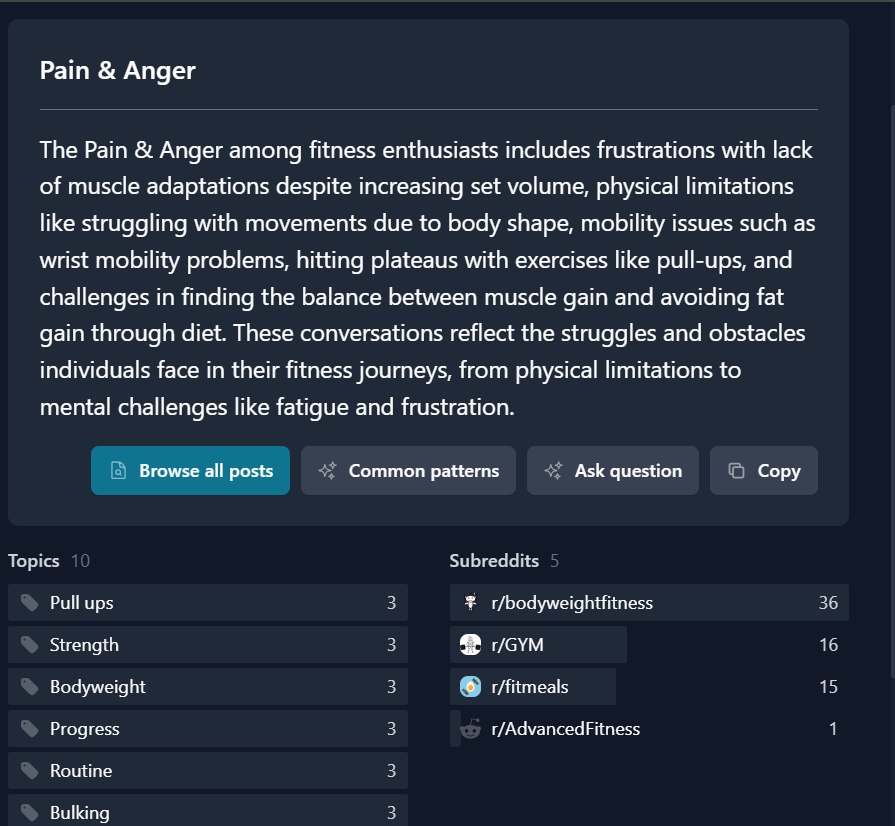
Of all these frustrations, what are some common patterns? All I have to do is click “Common patterns ✨” to summarize 68 submissions and save 51 minutes of reading.

Here’s what the AI identified:
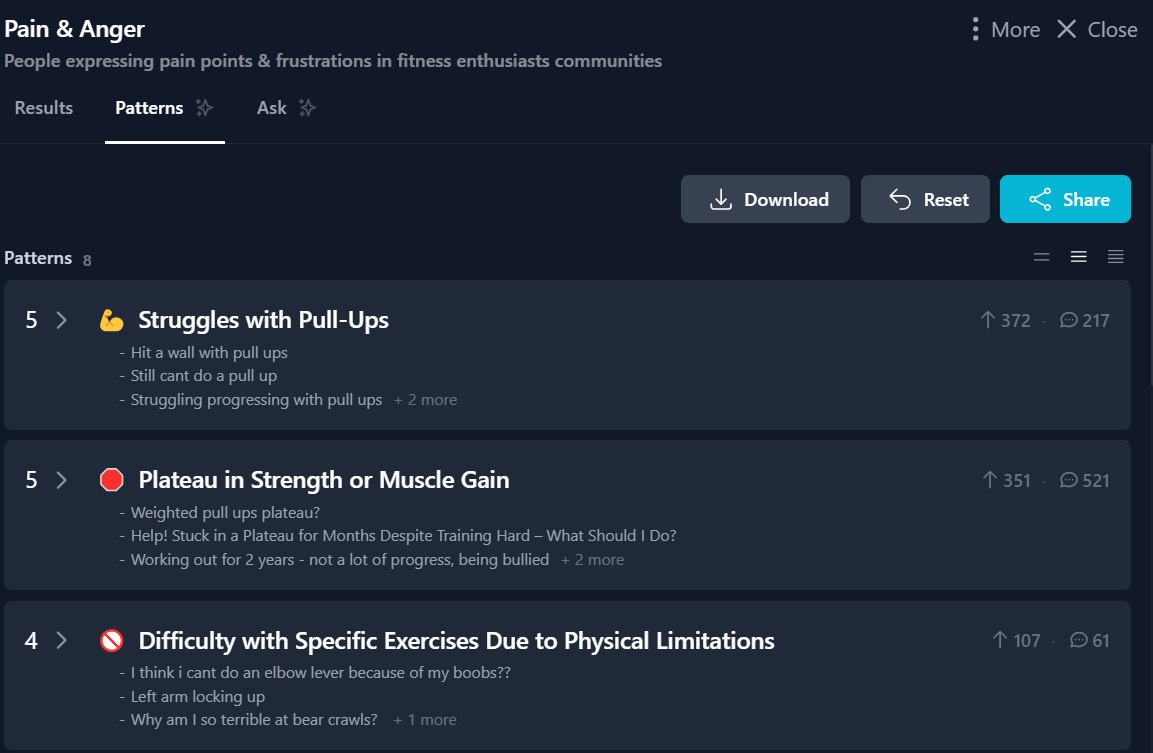
I could identify several potential gaps from the above. These could be features that…
- Highlight micro-progress, such as small improvements in form or reps.
- Offer adaptive exercise plans based on user-specific challenges.
- Offer customized plateau-busting plans.
And more.
Customer Feedback (Both Quantitative and Qualitative) in Market Gap Identification
Quantitative Feedback for Finding Market Gaps
Quantitative feedback focuses on scores and statistics.
For example, surveys are a great way to get meaningful numbers you can analyze. If you already have a product, you could ask users to rate how easy it is to complete a specific task in your product. If the scores consistently hover around a 6/10, that’s a sign you’ve got room to improve.
If you don’t have a product, a great way to look at your competitors’ ratings is to check their star ratings.
On your GummySearch dashboard, click the Audiences icon, then click the “Products” tab. This is where people will be specifically talking about and reviewing products.
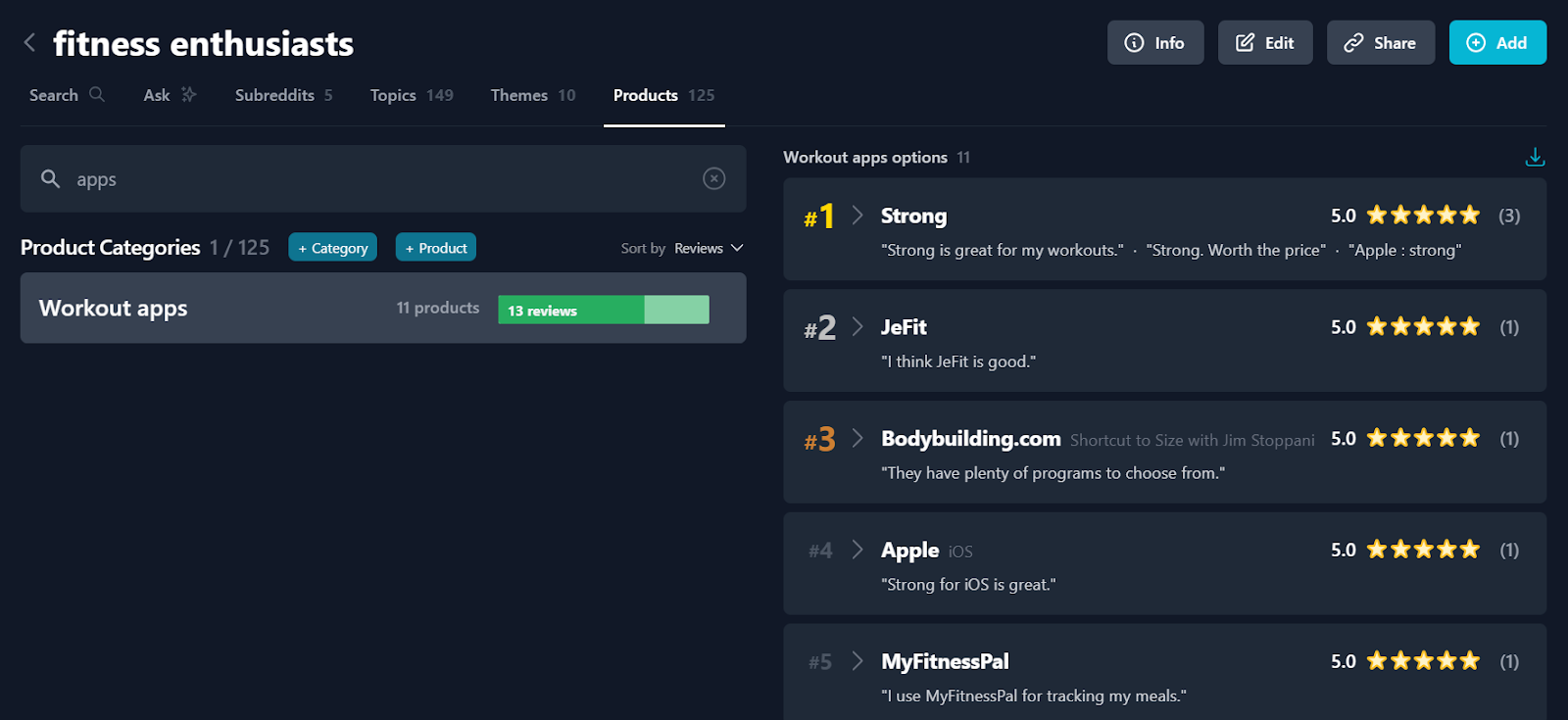
Remember the 3-4 star rule? It applies here as well!
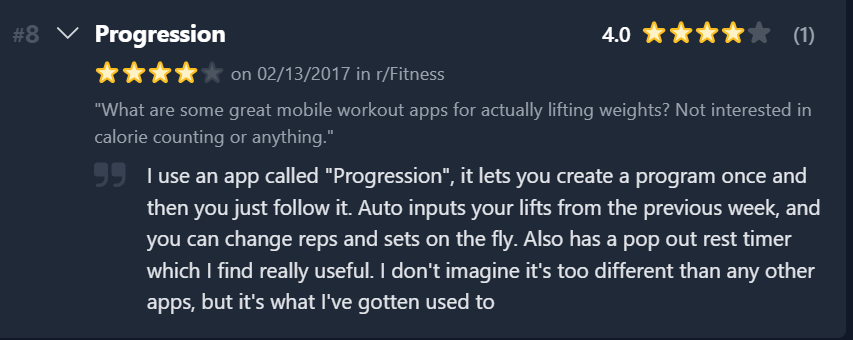
When they say it may not be too different from any other app but it’s what they’ve “gotten used to,” that’s what you’re fighting against: inertia and the status quo.
The deeper your market gap analysis, the stronger and more competitive your product can be.
Qualitative Feedback
Qualitative feedback focuses on the “why” behind the “what.”
Open-ended questions like, “What’s the most frustrating thing about using this product?” can generate long, insight-fueled answers that go over what led people to choose a solution.
Ideally, you’d ask this type of question during customer interviews, where you can truly connect with customers and ask follow-up questions. But if you’re short on time, GummySearch can be just as helpful.
AI-generated summaries and analyses can help pinpoint the right Reddit posts/comments to dive into. But for authenticity reasons, I’d suggest you read and document relevant submissions word for word. That’s how you can find use cases, “sticky” language, and eye-opening perspectives.
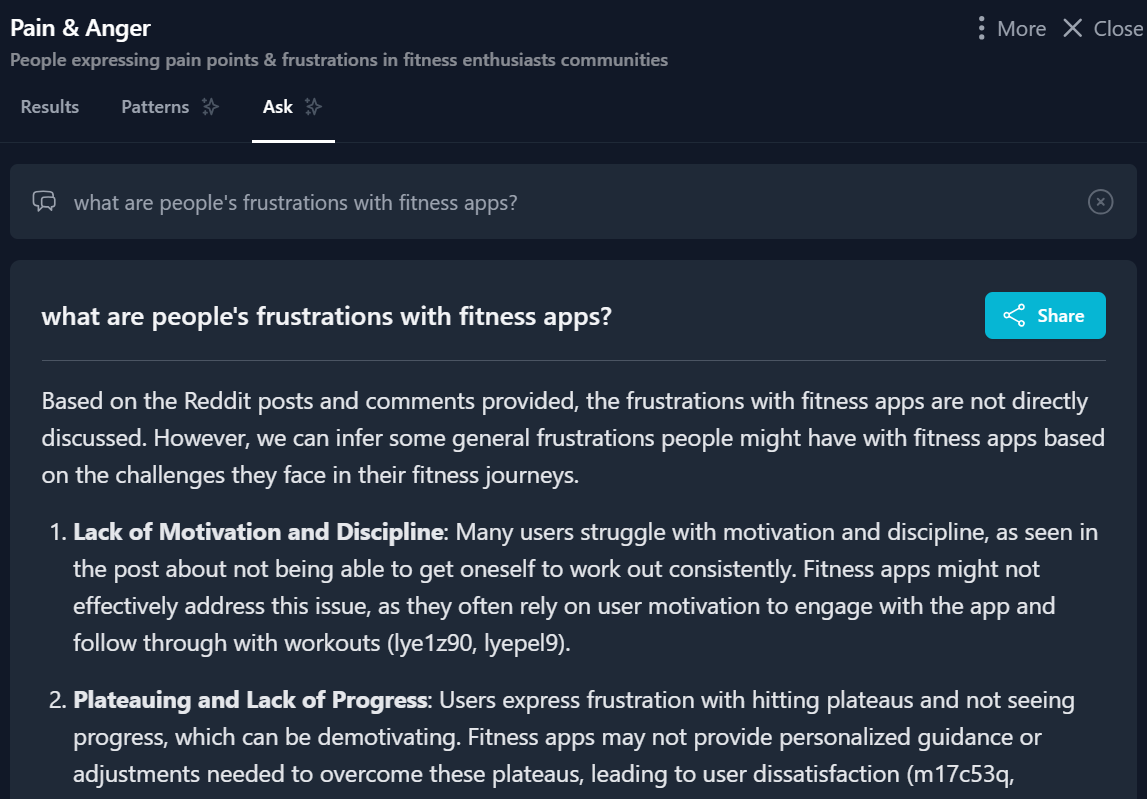
Behavior Analysis
Watching how users interact with your product can reveal pain points they might not articulate directly. Here’s where tools like heatmaps, funnel analysis, and session replays are useful. Apps such as UXCam help you identify friction points in journeys and discover the reasons why users might not be taking action.
For example, if users frequently drop off (or rage-tap their screens) during a specific step in your onboarding process, that’s a red flag. Addressing this gap could improve user retention and satisfaction.
Keep an Eye on Market Trends
Market trends can reveal emerging needs or shifts in consumer behavior that create new gaps to fill. You can use tools like Google Trends to track rising interest in certain search terms.
Or, you can use GummySearch for social listening. This way, you’ll be tracking relevant keywords and never miss a mention!
Let’s say I want to stay in the loop whenever people mention anything related to fitness apps. I’d click on “Advanced Search (the 🔍icon)” on the left-hand side and type in the keyword I want to track for my Fitness Enthusiasts audience.

GummySearch displays results that include exact matches and related keywords. Depending on the types of results I get, I can decide whether a keyword is worth tracking. The mentions I see here are quite recent, so I’ll give this one a shot.
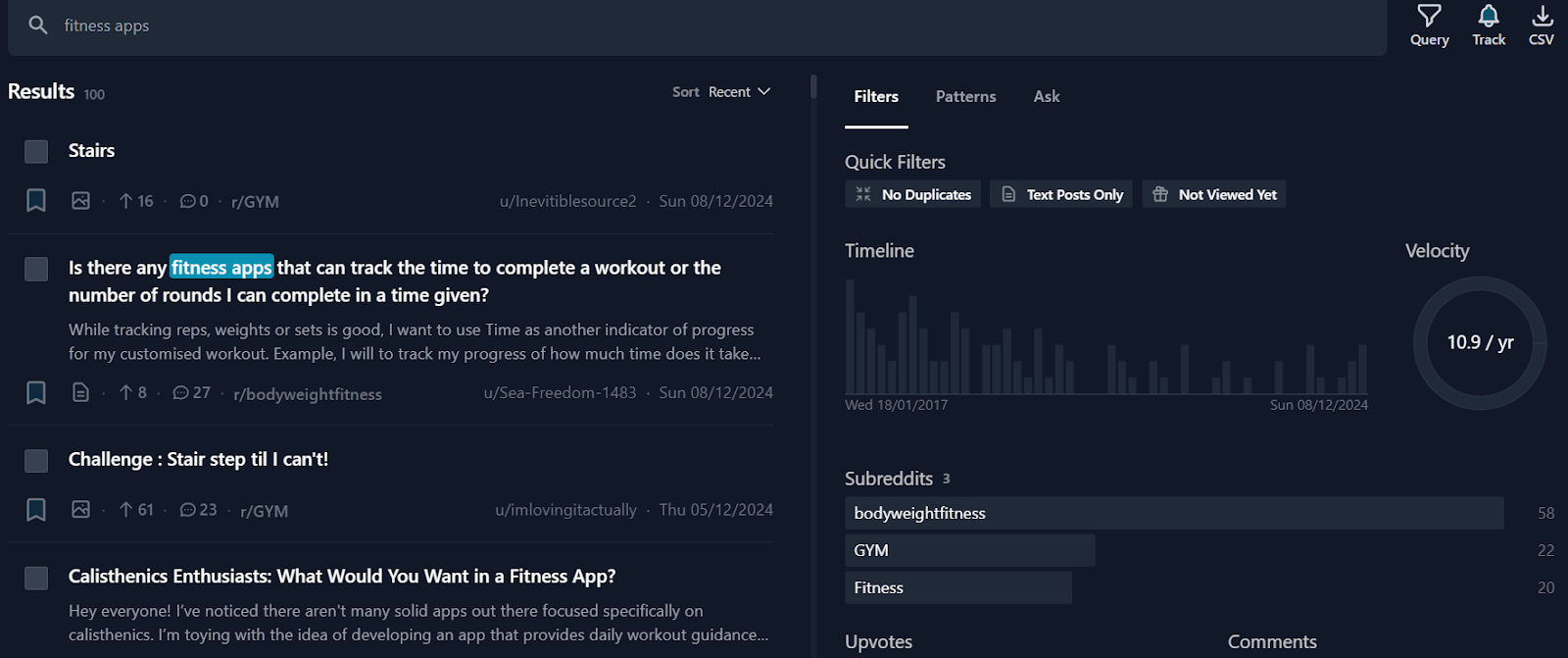
To track it, I’ll just click the 🔔 icon in the upper right corner. And that’s it!
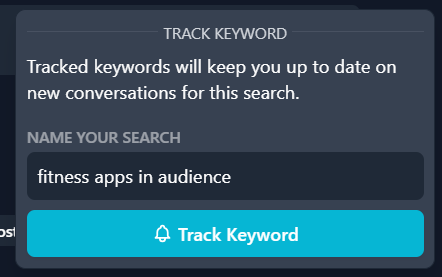
Final tip: Whenever available, don’t forget to check valuable AI-based themes from GummySearch, the “News” and “Opportunities” themes.
This is where people will be talking about news, events, and potential improvements!
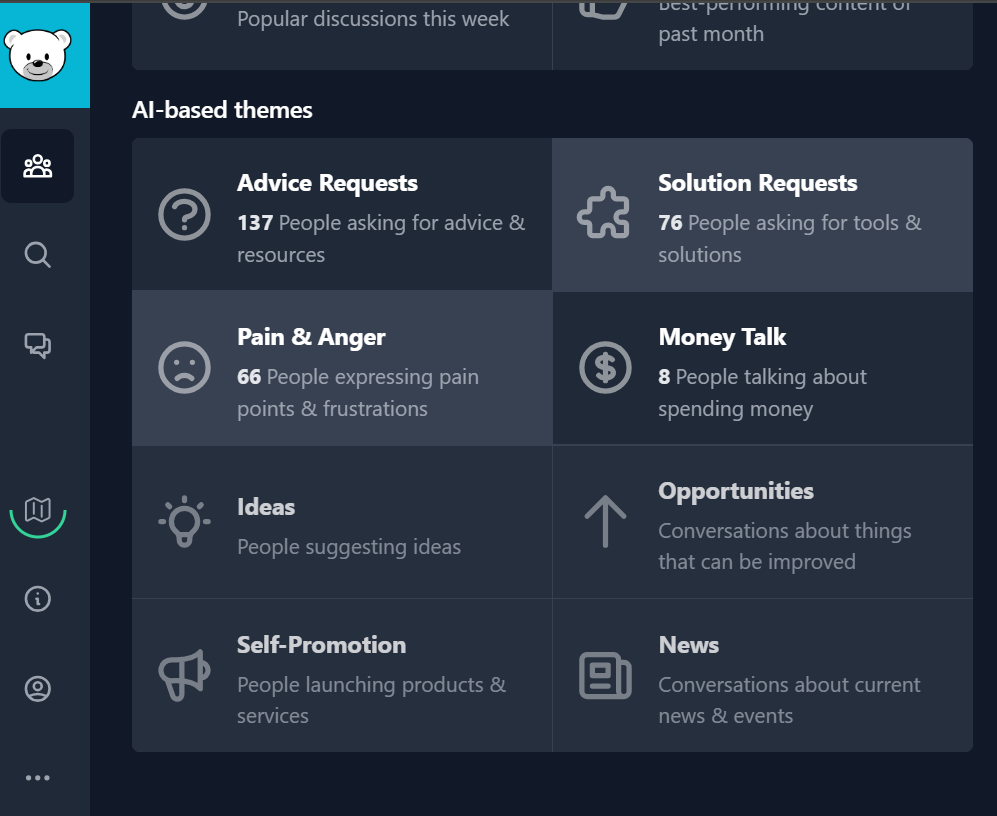
Not All of Us Can Be the Next Uber…
…and that’s okay.
In my perspective, we shouldn’t be approaching innovation and product development with the intention of creating “the next big thing.”
Instead, our intention should be to meet customer needs incredibly well. Because even the big names started as a means of addressing problems no one else cared to solve at the time.
Once you’ve found market gaps to fill, it’s time to test them in the wild. I wrote a guide on idea validation that will be helpful when deciding which solutions are worth your time versus those you should rain-check. Give it a read!
